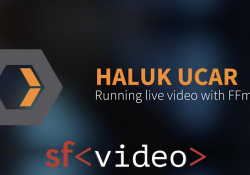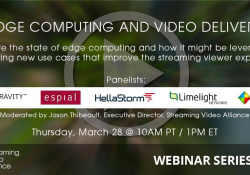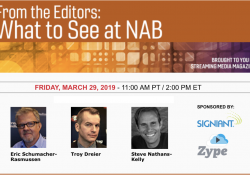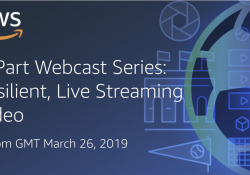Date: 26th March 2019
Time: 8am, 9am & 10am EDT – 15:00, 16:00 & 17:00 GMT
AWS is synonymous with cloud computing and whether you use it or not, knowing how to do things in AWS reaps benefits when trying to understand or implement systems in a cloud infrastructure. Knowing what’s possible and what others are doing is really useful, so whilst I don’t usually cover heavily product-specific resources here on The Broadcast Knowledge I still believe that knowing AWS is knowing part of the industry.
Here, there are 3 consecutive webinars which cover building a live streaming channel from the fundamentals through to making it operational and ongoing monitoring and maintenance.
Session one at 3pm GMT looks at end-to-end workflows and strategies for redundancy. It looks at both contribution of video into the cloud as much as what happens when it arrives and the delivery.
Session two at 4pm GMT looks examines the more complex workflows where you spread processing/failover across multiple regions and other similar situations.
Session three is the last of the day at 5pm GMT looking at setting up end-to-end monitoring to take the guesswork out of delivering the service on an on-going basis.
Register once to watch one or all of these sessions!










